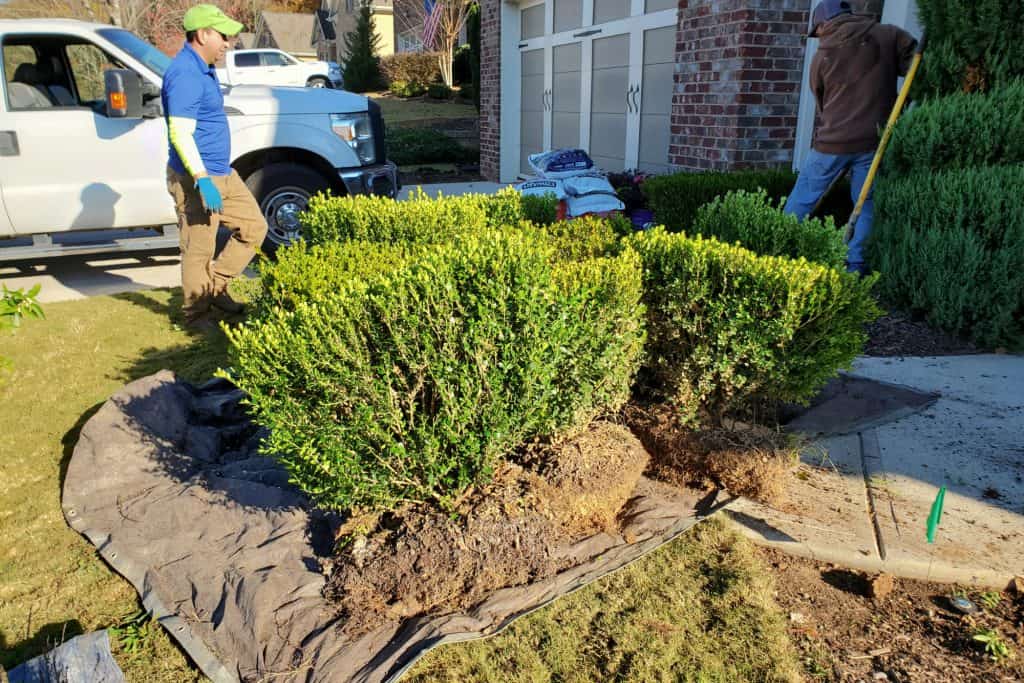Many of my clients have lived in their homes for decades, and I am delighted to return and do renovations to the landscapes periodically, say every three to 10 years.
I’ll start off by saying avoid this mistake: Cutting down all the overgrown shrubs with a chainsaw and hoping they will grow back smaller. This pruning technique may work on some plants, such as the dwarf yaupon holly, but generally you are destroying the natural beauty of the plant.
The first step is to take inventory of the plantings and decide if the plant should be removed, pruned, or transplanted.
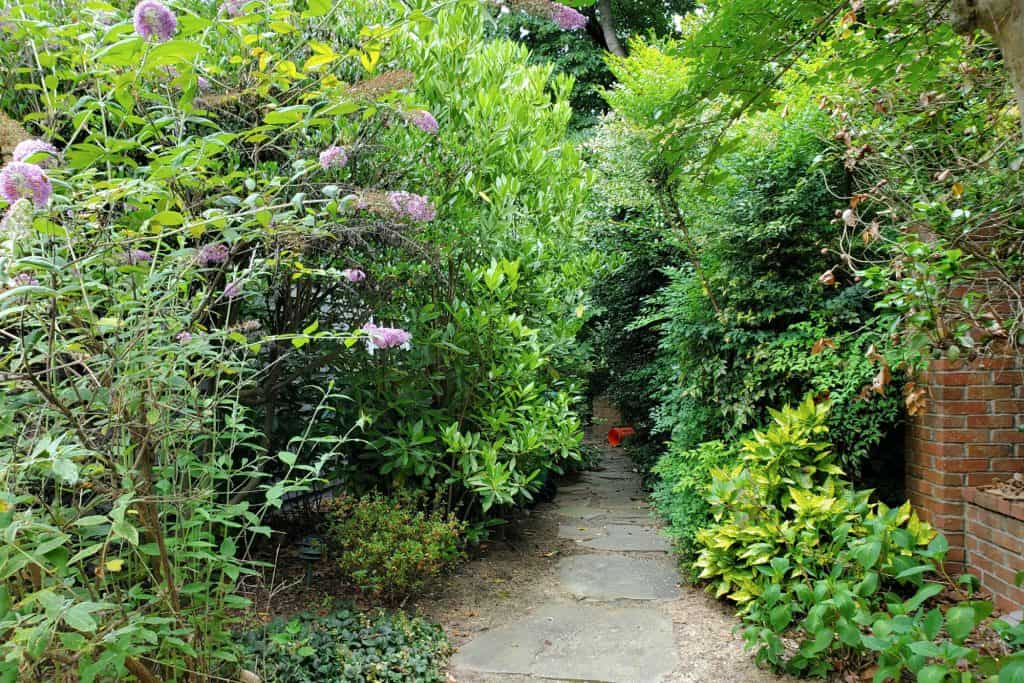
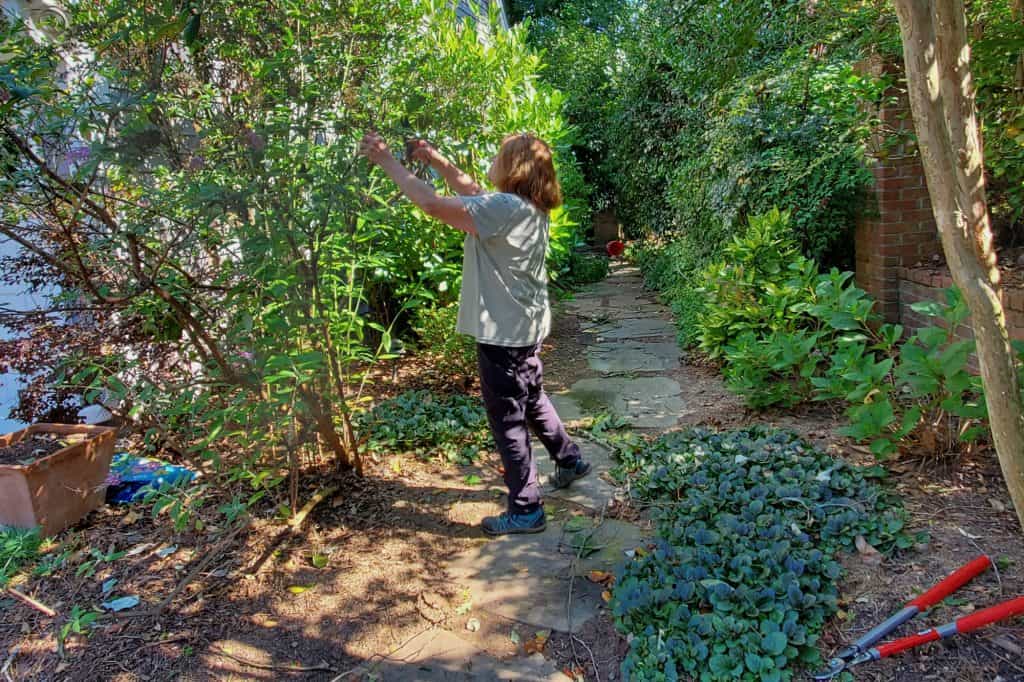
In this example, the plants were overgrown and blocked access through the side path. We chose to thin them out from the inside, removing larger branches instead of topping the plants. Topping with a power pruner causes the plant to put out dense new growth where ever you make the cuts. For natural pruning, we layer the cuts and do the pruning by hand so we can control where the cuts are made.
A creative pruning technique is to change a shrub into a tree. Here, we removed the lower branches of a camellia japonica.


This is an effective technique when the plant is kept at 5’ to 7’ tall. Any higher, and the new “tree” (they are called “standards” in the nursery trade) will become a maintenance nightmare involving climbing a tall ladder several times a year.
Here is an example of an overgrown espalier: attaching a shrub or tree to a wall.
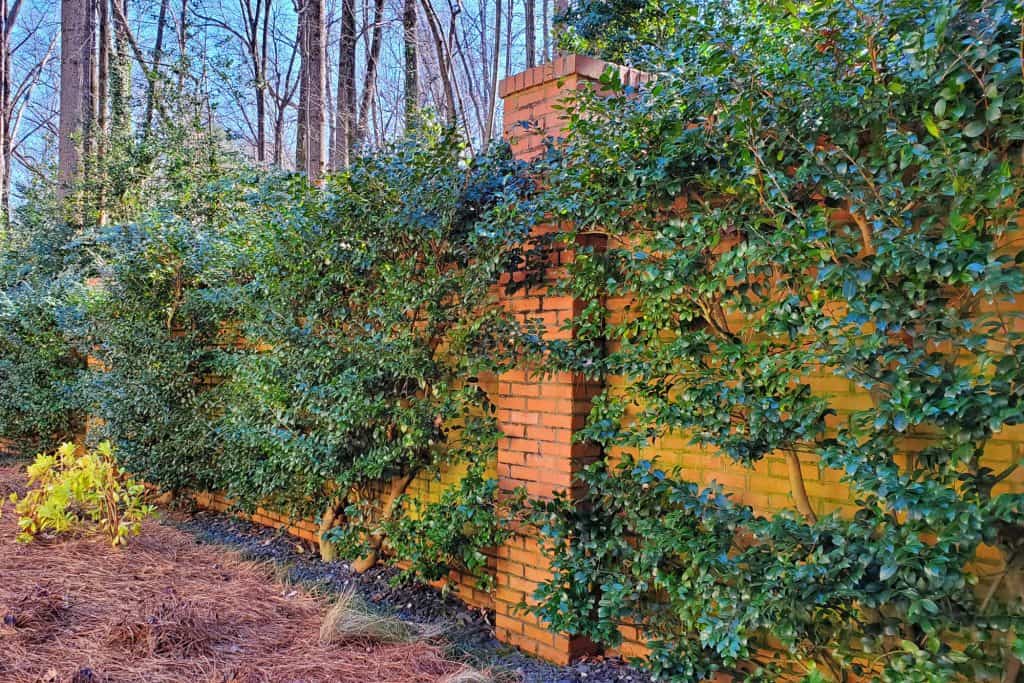
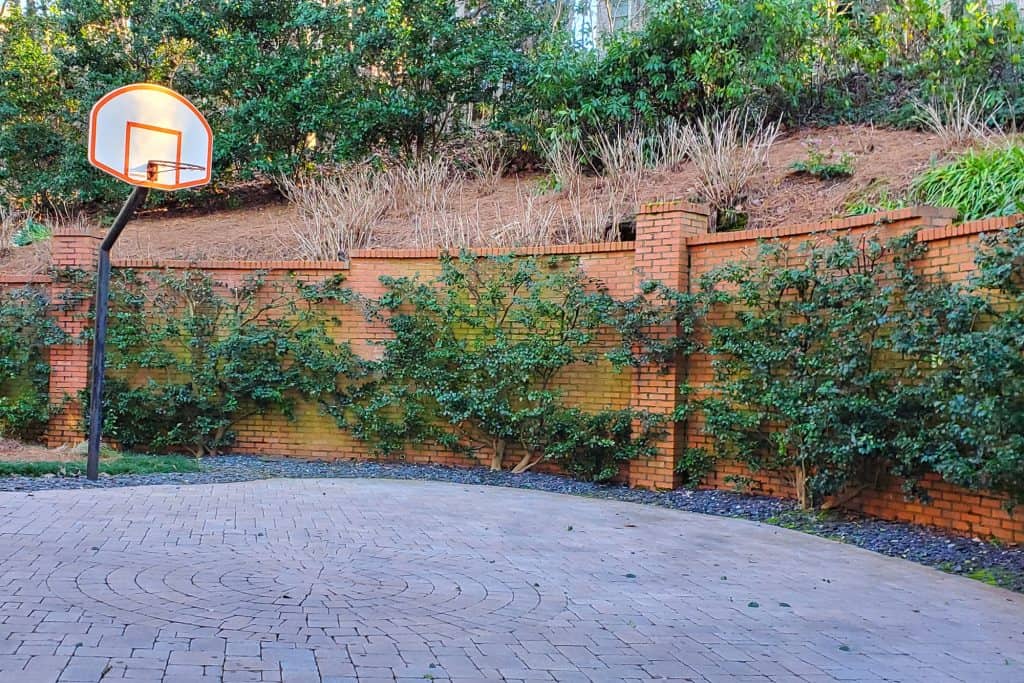
Lastly, consider if any plants should be transplanted. You can definitely divide and replant perennials and ground covers. Some shrubs that are not too old and have dense root systems, such as boxwoods, are fairly easy to dig up and move. It is almost impossible to move a plant that is growing under large trees because their roots are intermingled with the tree roots.
